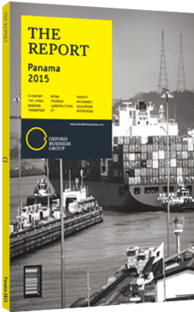Public investment in Panama focusing on logistics, mass transport and highways
Panama has a long history of transport and logistics infrastructure investment, with one of the most significant certainly being the widening of the Panama Canal. With an initial budget of $5.25bn, recurrent costs have raised the cost of the project to more than $6bn. Some estimate the grand total may reach $7bn, over 30% more than originally planned. Cost overrun claims from contractors reached $463m in compensation from which $233m were approved (related to concrete and basalt), and $130m in 2014, which were not accepted. The possible overruns have experts concerned that expenditure may be deviated from other works towards the completion of this vast engineering feat.
Government Plan
With a vision to invest over $19bn (in addition to the Panama Canal project), the Strategic Government Plan 2015-19 (Plan Estratégico de Gobierno 2015-19, PEG) is highly ambitious. The plan considers investments in several sectors, with a focus on social development. Since the transport and logistics sector has historically been a major contributor to the country’s GDP, growing by more than 17% annually between 2007 and 2014, under the PEG $3.28bn will be invested in logistics and $3.21bn in urban transport in the 2015-19 period. These numbers represent 16.8% and 16.5%, respectively, adding up to a third of public spending. Logistics investment is slightly skewed towards the first two years with over $800m per year, then reduced to around $500m annually for the last three years. Meanwhile, for urban transport, 2017 will be a key year with $776m budgeted.
Public spending in logistics will be largely directed towards construction and renovation of the country’s roads, with $2.9bn to be spent. However, areas such as ports will likely see a big influx of private capital via concessions. Some of the examples include Puerto Verde on Isla Largo Remo with an estimated $7.9bn investment; Puerto Corozal, a 120-ha project proposed by the Panama Canal Authority at $650m; the PSA Panama International Terminal with a $350m port expansion; and the Panama Colón Container Port at $600m.
One of the country’s largest public transport works will be the construction of the metro’s second line. With an estimated budget of over $2bn, the metro project makes up over 60% of the total public transport budget. The initial tender was published in September 2014, and by February 2015, three contenders had presented their proposals: UTE Panama II consortium, consisting of Dragados (Spain), Ingenieros Civiles Asociados (Mexico), and Graña y Montero (Peru); Línea 2 formed by Constructora Norberto Odebrecht (Brazil) and FCC Construcciones (Spain), which took the line 1 construction tender; and PANAM etro including China Harbour Engineering Company, China Railway First Group and Corsán-Corviam (Spain). At the end of May 2015 the contract was awarded to a consortium that includes Odebrecht and FCC Construcciones.
Highways
In the highway segment, and with a $2.9bn budget, the Ministry of Public Works has a number of maintenance and new construction projects. In 2015 the numbers showed 94 maintenance projects, with a $140m budget of which slightly over 50% has been executed. Meanwhile, new projects in execution have a budget of $1bn, comprising 34 projects, 15 of which are in the Panama province. Finally, there are 15 special projects which account for most of the entity’s budget at $2.7bn, with $757m pending execution. The single most important project is the widening and rehabilitation of the Pan-American Highway with a total budget of $856m, of which $598m is still to be spent.
With the current transport and logistics investment amounting to $6.5bn in the next five years, the annual average of $1.3bn looks promising. This equates to 3.65% of the country’s 2014 GDP. In late 2014 a report by the Economic Commission for Latin America and the Caribbean showed that Panama spent 3.2% of GDP on infrastructure investment. This means that the number has risen slightly. Compared to the rest of the region, Panama’s public spending may be lagging behind, ranking 8th out of 15 in Latin America. Nonetheless, private expenditure is now stepping in to fill the gap.
You have reached the limit of premium articles you can view for free.
Choose from the options below to purchase print or digital editions of our Reports. You can also purchase a website subscription giving you unlimited access to all of our Reports online for 12 months.
If you have already purchased this Report or have a website subscription, please login to continue.

